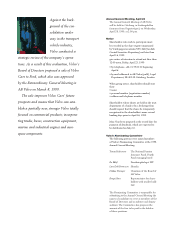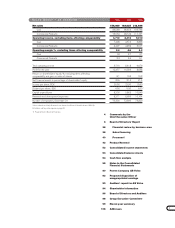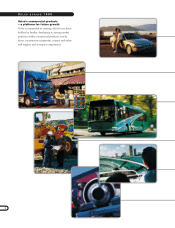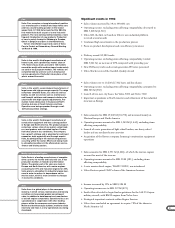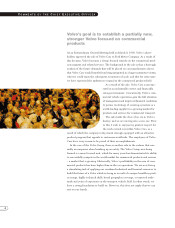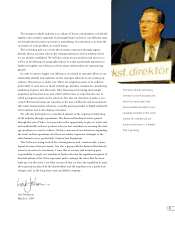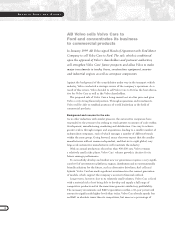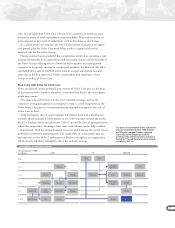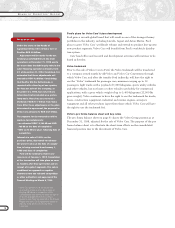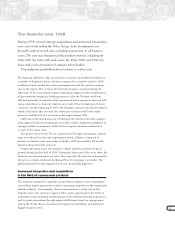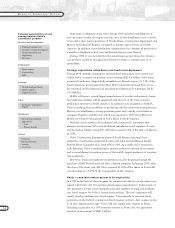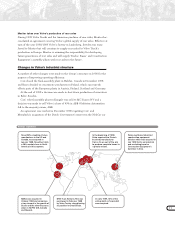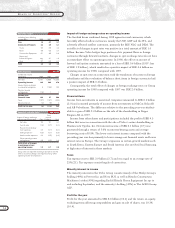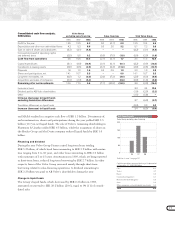Volvo 1998 Annual Report Download - page 11
Download and view the complete annual report
Please find page 11 of the 1998 Volvo annual report below. You can navigate through the pages in the report by either clicking on the pages listed below, or by using the keyword search tool below to find specific information within the annual report.
9
The financial year 1998
During 1998, several strategic acquisitions and structural transactions
were carried out within the Volvo Group. Sales development was
favorable and increased, also excluding acquisitions, in all business
areas. The year was characterized by product renewal, including the
Volvo S80, the Volvo FM truck series, the Volvo 5000 and 7000 city
buses and a new generation of compact wheel-loaders.
Unsatisfactory profitability forced actions to reduce costs.
The financial turbulence that caused major economic and political problems in
a number of Southeast Asian countries continued in a negative spiral in 1998,
resulting in lower production, rising unemployment and low private consump-
tion in the region. Also in Japan the financial situation worsened during the
latter part of the year, despite massive stimulus packages and the establishment
of governmental emergency banking measures. Also the Western world was
affected, primarily in industries that experienced fewer exports to Asia and stiff-
ening competition in domestic markets as a result of the devaluations of Asian
currencies. At the beginning of 1999, the Brazilian currency was also devaluated
which could mean that several Latin American currencies will come under
pressure, with the risk of a recession in the region during 1999.
GDP rose in Western Europe by 3% during 1998. Interest rates fell, employ-
ment improved and stock exchanges recovered, which combined contributed to
stronger private consumption. Profit levels in export industries weakened as
a result of the Asian crisis.
The private sector in the US was characterized by high consumption, despite
signs of weakened income and employment trends. Inflation continued to
decline and interest rates were reduced further. GDP increased by 4% but the
growth softened towards year-end.
Despite the Asian crisis, the transport-vehicle industry experienced good
growth during the first half of 1998. During the latter part of the year, when the
financial crisis became more pervasive than expected, the increase in demand for
the year as a whole slackened, declining 3% in the passenger car market. The
global demand for trucks stagnated, but at an historically high level.
Increased integration and acquisitions
in the field of commercial products
The market’s demand for complete transportation solutions, new technologies
and uniform legal requirements results in increasing integration in the commercial
vehicles industry. Concurrently, a heavy concentration is under way in the
industry and in the customer segment. This creates opportunities for Volvo to
participate in the structural transformation of the industry through acquisitions
and to secure its position through improved efficiency based on synergy gains
among the Trucks, Buses, Construction Equipment and Marine and Industrial
Engines business areas.


